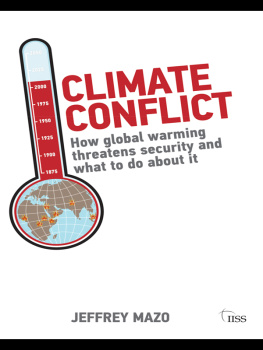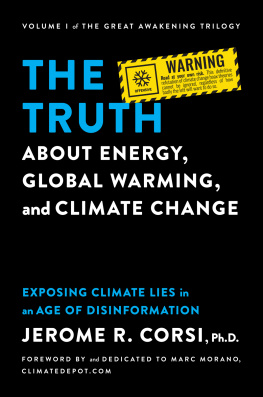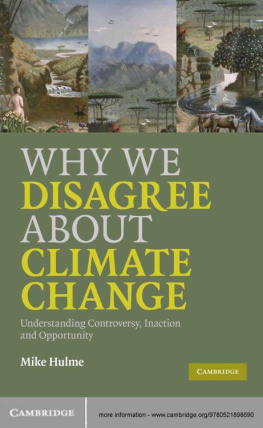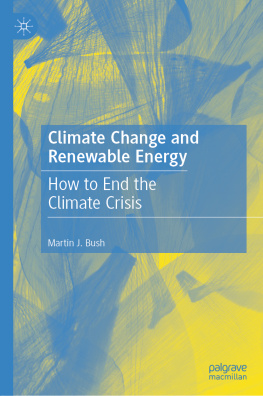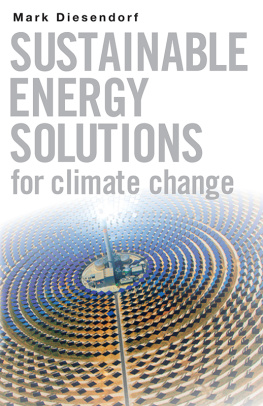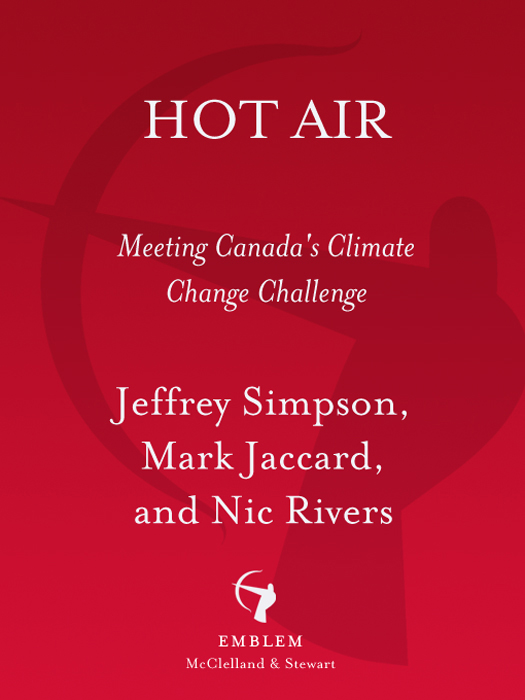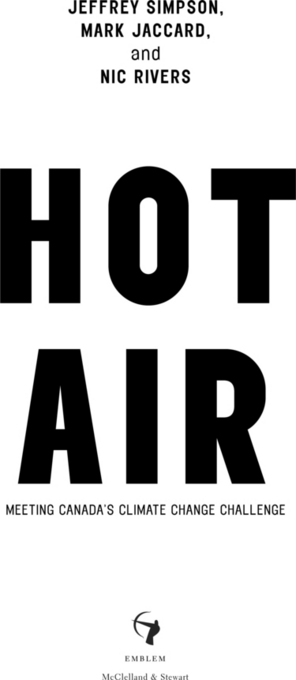CONTENTS
PART I
HOW WE GOT INTO THIS MESS: THE SCIENCE AND THE POLITICS
PART II
GETTING OUT OF THE MESS: OPTIONS AND SOLUTIONS
PART I
HOW WE GOT INTO THIS MESS
The Science and the Politics
CHAPTER ONE
Why a Warmer Canada Is Bad News
C anadians know they shiver in a huge, cold, northern country except residents of Vancouver Island and British Columbias Lower Mainland, who taunt fellow Canadians with tales of crocuses and daffodils in February. Anything, therefore, that suggests their country could get warmer, or is getting warmer, might strike Canadians as a blessing. What could be wrong with shorter, milder winters and long, hotter summers? If the climate is indeed changing, and more hot air arrives, then bring it on.
But because Canada is a huge, cold, northern country, a warmer climate does threaten to change it, especially its Far North. Because Canada is a huge country, climate change presents not just one threat that a smaller country might have to confront, but a variety of threats, most of them negative. Because the geography of a cold country like ours has been shaped by snow and ice, a diminution or dilution of snow and ice changes the vast Arctic, the glaciers and mountain snowpacks that feed rivers, lake levels, sources of fresh water, treelines, tundra. The climate, in other words, changes the geography. And because the biggest temperature changes will be felt in the northernmost and southernmost parts of the earth, a northern country such as Canada cannot escape the effects of global warming. All countries will be affected by climate change, with those already experiencing extremes of heat (India) and drought (Australia and parts of Africa) or those with low-lying territory (Pacific islands, Bangladesh) being particularly vulnerable. But a big, cold, northern country will feel the effects, too. Whether they realize it or not, Canadians are on the front lines of global warming.
Canadian scientists were among the first to underscore the perils of global warming to the planet (and Canada) more than two decades ago. But the general public missed the warnings. The evidence seemed inconclusive, and not much media attention was paid to the phenomenon. Politicians, when told of the problem, preferred discussion documents, round tables, and policies designed to minimize political risk.
The effects of global warming on Canada, however, have been apparent for some time, as a few examples will illustrate.
The Arctic Councils five-year study by 300 scientists, published in 2004, found a 4-degree increase in temperatures in the western Arctic from 1953 to 2003, and a 2- to 3-degree increase elsewhere in the Canadian Arctic. (All temperatures in this book are stated in degrees Celsius.) The results in the Far North have already been dramatic, and more drama is on the way: less snow and more wind, falling water levels in northern lakes and rivers, more insects, decreasing sea ice, shrinking tundra, thawing permafrost leading to more difficulty building and maintaining winter roads, ongoing threats to traditional aboriginal ways of life, and widening of the Northwest Passage.
Global warming is already affecting chunks of Canadas forests. For example, the mountain pine beetle has killed half of British Columbias lodgepole pine and will probably have killed 80 per cent of it by 2013. The provincial government calls the infestation a forest health epidemic. Only very cold winters what we used to consider normal winters kill the beetles that nest under the trees bark. Warmer winters for a decade have produced a looming economic catastrophe for towns, mills, and people dependent on a supply of pine. The outbreak that started in a provincial park now covers 8 million hectares of land in central and southern British Columbia an area more than twice the size of New Brunswick and is spreading east across the Rockies into Alberta and north into the Yukon. David Coutts, Albertas minister of sustainable development, said in October 2006, I pray every night that Mother Nature gives us minus-30-degree weather. We are at war with the mountain pine beetle. And this year, Alberta is the battleground.
A study by the Canadian Forest Service, released in September 2006, reported the pine beetle was spreading at an alarming rate, with outbreaks as far east as Saskatchewan. In July 2006, a strong wind blew millions of pine beetles into the area around Grande Prairie, Alberta, where they began attacking Jack pines and lodgepole pines. Foresters are deeply worried that the infestation could leap to the boreal forest that spreads across much of Canada.
Glaciers are receding faster than ever, with consequences for water levels in the rivers that emerge from them. Some glaciers in British Columbias popular Garibaldi Park, for example, have receded by 75 per cent over the past two decades. Areas of the Canadian prairies and British Columbia that rely on meltwater are likely to experience more long-term water shortages as a result of less glacial melt. Agricultural soils that depend on rivers and creeks retaining certain water levels are likely to become drier and, with variations according to circumstances, less productive. But in some parts of Canada, a warmer climate and more carbon dioxide (co2) in the air might help agricultural production, although if the buildup is too great, agriculture could suffer.
Increased temperatures can contribute to more air pollution in urban areas, since smog remains closer to the ground at higher temperatures. Smog is already a significant problem in southern Ontario. The Ontario Medical Association has estimated that smog was responsible for as many as 5,800 premature deaths in 2005.
A 2003 study for the Canadian Council of Ministers of the Environment (CCME) found that from 1900 to 1998, average temperatures in southern Canada rose by 0.9 degrees. During the last 50 years of that period, the west and northwest parts of Canada got hotter. Only the northeastern corner of the country (eastern Baffin Island, northernmost Quebec, and Newfoundland and Labrador) became cooler. Generally speaking, the weather is warming less at the high end of the temperature scale than at the low end: fewer cold winter nights rather than more steaming hot summer days.
Higher temperatures evaporate more water from the earths surface. This leads to more rain in rainy areas in rainy seasons, and more droughts in dry areas. Canadian precipitation levels have risen everywhere except in the southern prairies. In fact, precipitation has increased by between 5 and 35 per cent in most of the country since 1950, the CCME study found. Sea surface temperatures on the West Coast rose by between 0.9 and 1.8 degrees over the last century. Data from the East Coast is spotty, but tests off Cape Spear, Newfoundland, show no change, consistent with the finding that only in the most northeastern parts of Canada has the climate not warmed.
A warmer climate increases the unpredictability of weather patterns, bringing on more unusual conditions of the kind that Canadians have been experiencing in recent years. In 2006, as Environment Canada laconically reported, Canadians had plenty to weather.


